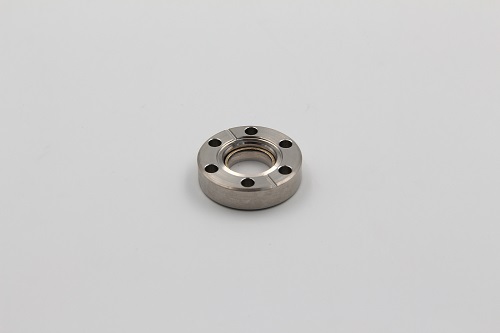Every part of high-precision optical systems and sophisticated spectroscopy devices needs to function within defined parameters. One such part is a custom viewport, which facilitates observational, measuring, and control tasks within a closed and hermetically sealed system. Custom viewports are needed in UHV chambers as well as in high-energy laser systems and they maintain vacuum tightness and optical path alignment.
What is a Custom Viewport?
A Custom viewport is an optical window situated in vacuum chambers and sealed environments which allows for light to pass through while still maintaining vacuum and pressure conditions. Custom viewports are designed to address specific needs related to:
Wavelength range (UV, Visible, IR, or EUV)
Window materials (sapphire, fused silica, quartz)
Thermal and mechanical stress
Mounting geometry
Vacuum compatibility

Applications in Optical Systems
Custom viewports are indispensable in optical setups where standard windows fall short. Examples include:
Laser beam entry and exit points in high-energy optical systems
Spectroscopy cells requiring precise transmission at specific wavelengths
Microscopy systems within sealed or vacuum environments
Imaging instruments used in astronomy or particle physics
The ability to tailor the viewport to the optical and mechanical design significantly enhances the accuracy and durability of the overall system.
Overview of the Role of Critical Viewports in Spectroscopic Instruments
In spectroscopy, especially in vacuum or controlled environments, materials with minimal absorption and high chemical stability, as well as high transmittance, are of utmost importance. Custom viewports assist in:
Applying anti-reflective multilayer coatings for the specified wavelengths
Withstanding damage from UV and EUV exposure
Endurance to mechanical and thermal stresses
No leakage in UHV or high-pressure environments
In Raman, FTIR, and fluorescence spectroscopy systems, custom viewports are important as uncoated windows or standard viewports are not used in such high sensitive signal detection systems.
Material selection – Why It Is Important
Material selection, as part of custom viewport design, is critical. In optics and spectroscopy, the following materials are used most frequently:
Fused Silica – Good in UV and Visible range with low thermal expansion
Sapphire – Very strong and high durability for high-pressure and high-temperature systems
Quartz – High chemical stability and resistant to extreme temperatures.
Each of these materials will provide a particular range of wavelengths, related stresses, and needed transparency.
Advantages of Using a Custom Viewport
Choosing a custom viewport offers multiple benefits:
– Optimized light transmission for specific applications
– Enhanced system reliability in demanding environments
– Design flexibility to integrate into complex optical layouts
– Improved safety and performance through precise sealing and material engineering
In complex optical and spectroscopy systems, a viewport is not a mere glass window; it is a vital optical boundary that integrates performance, robustness, and accuracy. Choosing a custom viewport assures that the optical system functions optimally under various environmental or mechanical stresses.